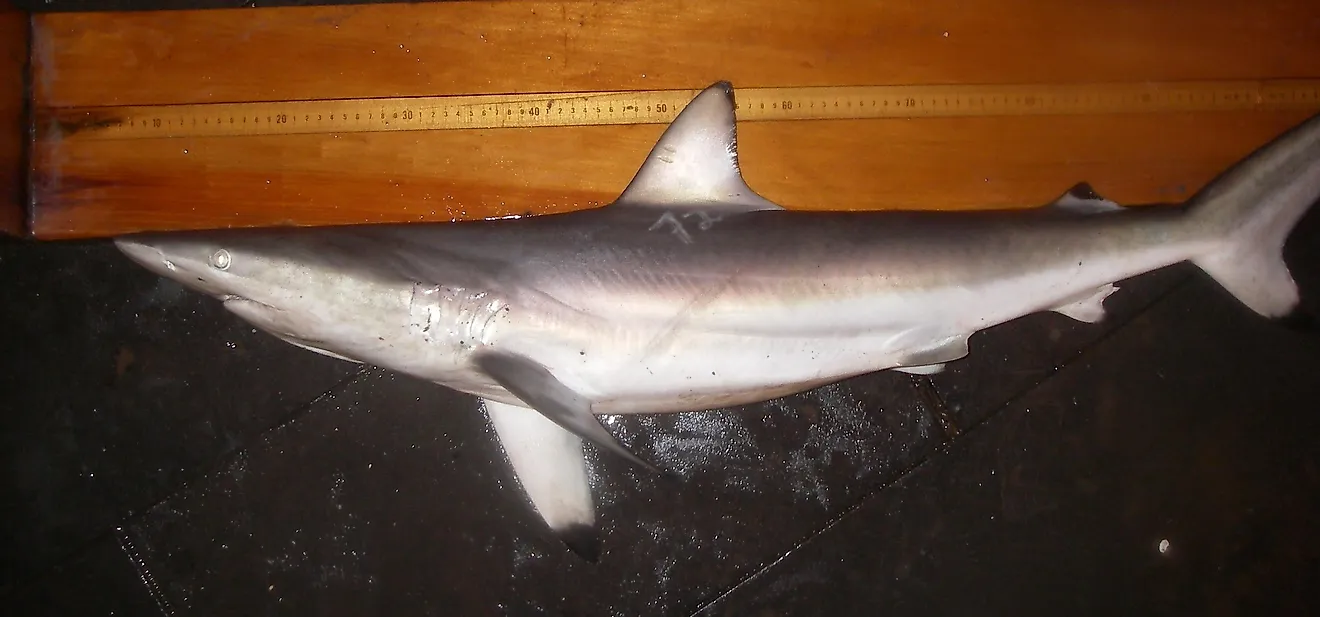Spinner Shark Facts: Animals of North America

5. Physical Description
The Spinner shark is a large and slender species of requiem shark, with a long and pointed snout, and black-marked fins. It has a gray-bronze back and a white belly, as well as a thin white band along its flanks. It also has small and circular eyes, and a unique configuration of teeth. While the teeth in its upper jaw have narrow triangular cusps on broad bases, the lower jaw teeth have more slender cusps. Also differing from many other species of sharks, spinner sharks have small, triangular first dorsal fins. Spinner sharks, on average, weigh 123 pounds and are 6.6 feet long. They can, however, achieve body masses as heavy as 200 pounds, and lengths of up to 9.8 feet.
4. Diet
Spinner sharks feed mainly upon small fishes. Although they prefer swarm fish, such as sardines and herrings, they will also eat anchovies, sea catfish, lizardfish, mullet, bluefish, tunas, bonito, croakers, cuttlefish, squid, and grunts. They catch their prey by rapidly swimming through schools of fish, spinning and leaping while snapping their wide jaws to catch prey.
3. Habitat and Range
Spinner sharks live within a wide range of ocean habitats. They can be found at all levels of water the column, though they show preferences for water of less than 98 feet deep. They are also migratory sharks, usually staying in warm offshore waters in the spring and summer and moving to deeper water in the colder seasons. Their diaspora ranges across three major oceans. In the Atlantic Ocean, they can be found along the coasts of the US and South America, as well as North Africa and southward to Namibia. In the Indian Ocean, Spinners live along South Africa, as well as Madagascar, India, Java, and Sumatra. In the Pacific Ocean, spinners can be spotted in Japan, Vietnam, Australia, and the Philippines. They are classified as "Near Threatened" by the IUCN Red List of Threatened Species.
2. Behavior
Spinner sharks are very acute and perceptive when feeding. They are known for vertically jumping up and out of the water, and disrupting large crowds of fish. They are not particularly aggressive, although they sometimes do attack humans when in desperate need of food. But they are more often caught by humans for commercial consumption, as their fins, meat, and oil all brings high market values. They are migratory rather than territorial, and move to deeper oceans during the winter months, returning back to shallower waters when it becomes warmer.
1. Reproduction
Spinner sharks are viviparous. Females have a yolk sac placenta to feed embryos inside them until pups are mature enough to be born externally. Females give birth every other year instead of every year. The gestation period is between 12 and 15 months long, varying according to the location of their home ranges. Females give birth in summer months in coastal regions, with litters' sizes ranging between 3 and 15 pups. These offspring measure between 24 and 30 inches (60-75 centimeters) at birth. Pups grow rapidly, and will reach maturity within their first several months of life.











